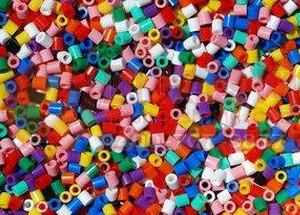Analysis on the difference between static separation and hydrocyclone separation of waste plastics density separation method

This is a method of separating and separating different plastics with different densities, and there are two methods of static separation and hydrocyclone separation.
1. The static separation utilizes the ups and downs of different density plastics in a specific density liquid to separate them. This method is simple and easy, and only needs to select a suitable separation liquid, which is suitable for separating varieties with large density difference, and it is difficult to obtain high-purity separations for separation of similar density. Commonly used separating solutions are water, saturated saline solution, 58.4% alcohol solution, 55.4% alcohol solution and calcium chloride aqueous solution.
However, when water is used as the density separation liquid, some of the plastics will float on the water surface due to the difference in the beginning and surface activity of the plastic, which will affect the separation effect. At this time, it is necessary to use a surfactant for pretreatment to fully infiltrate. For example, a mixed plastic composed of polypropylene, low density polyethylene, high density polyethylene, polystyrene, and polyvinyl chloride, the separation step: first, polyphenylene having a density greater than 1 G/cm 3 with water containing a small amount of surfactant Ethylene and polyvinyl chloride (sink) are separated from low density polyethylene, high density polyethylene and polypropylene (floating) with a density of less than 1G/CM3; then polystyrene (floating) and polyvinyl chloride (sink) are treated with aqueous salt solution. Separate; then separate low density polyethylene, high density polyethylene and polypropylene with different density alcohol solutions.
2. Hydrocyclone Separation The use of hydrocyclones and floatation methods can effectively separate plastics with densities greater than and less than 1 G/cm3. However, the thickness is preferably greater than 3 CMM, and the difference in density is about 0.5 G/cm 3 , for example, the separation of polypropylene and polyvinyl chloride, the primary separation rate can reach 99.9%. If a flat bottom separator is used, various plastics with a density greater than 1 G/cm3 can be separated. Multi-stage separation works better.
The separation step of the hydrocyclone: ​​ethically smash the waste plastic, then clean and pre-treat, suck the material in the hopper into the storage waste, the waste is evenly dispersed in the tank, and is fed into the hydrocyclone at a fixed speed by a centrifugal pump. . The plastic with a small density is discharged from the upper part, collected, and dehydrated by a vibrating screen. Separate water can be recycled
Guangdong Jia Mei Biological Technology Co.Ltd , https://www.jaymeimask.com
